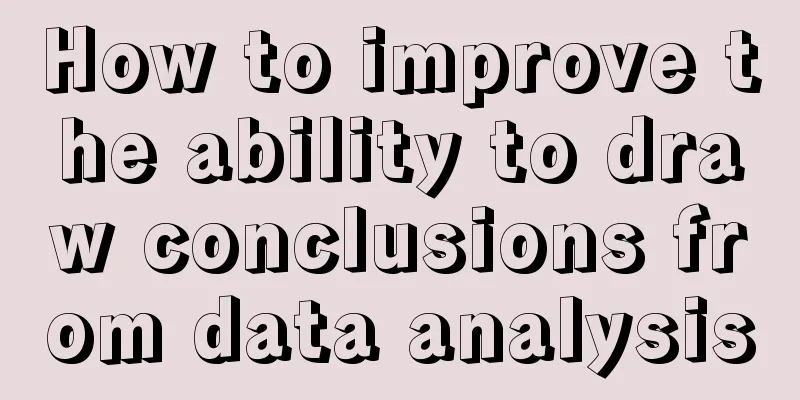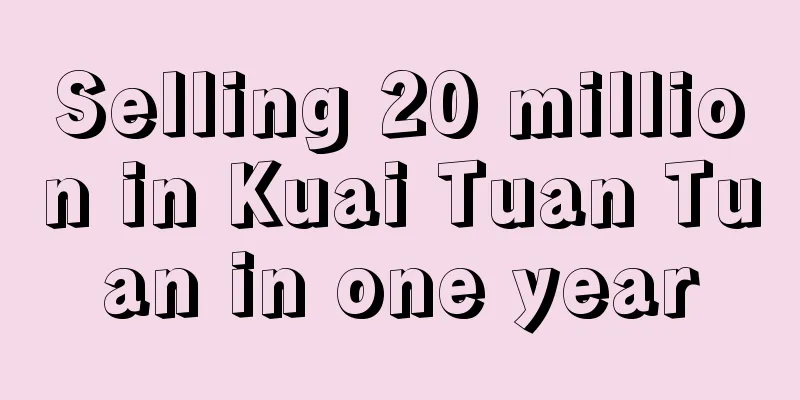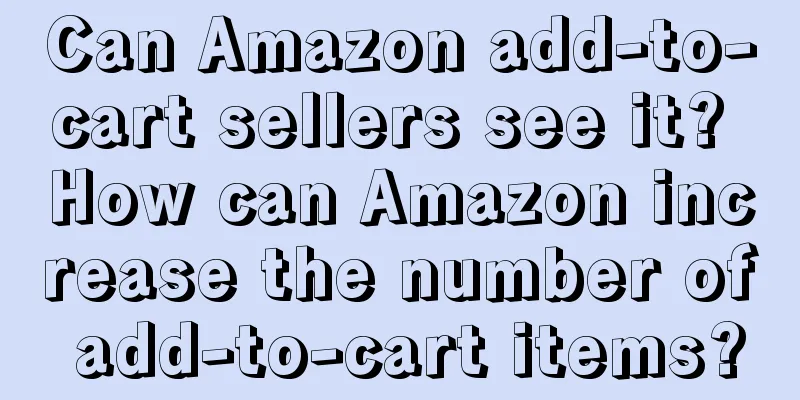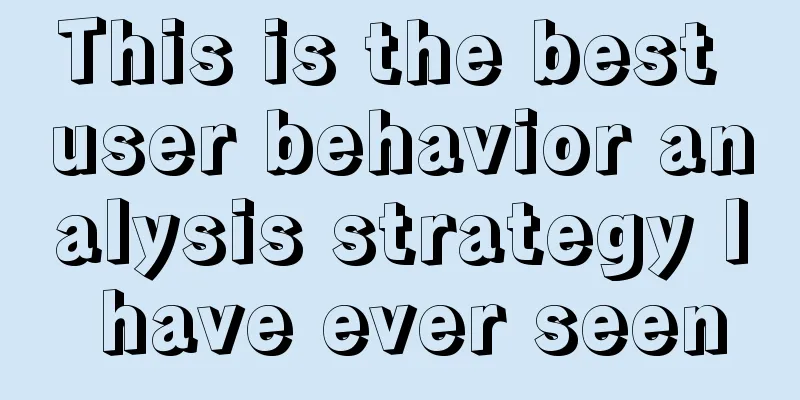Unveiling the secrets of leveraging marketing: value benefits, six common methods, and the "three degrees" that need to be paid attention to
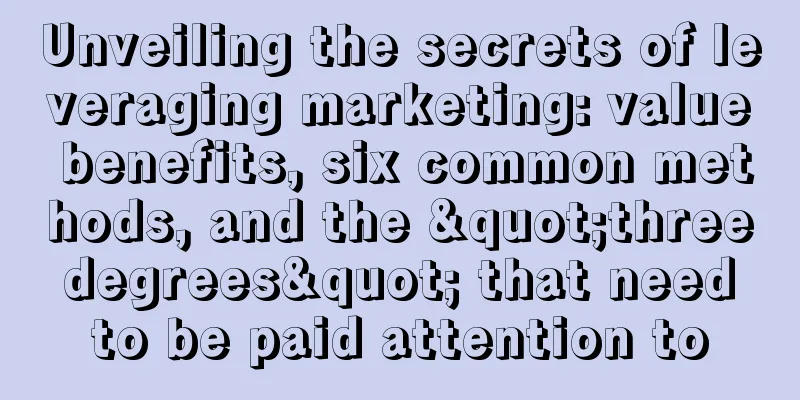
Leverage marketing is a common brand marketing method, and many brands enjoy using it. Some brands have achieved multiplier effects through marketing with leverage, and gained multiple increases in brand exposure, popularity and reputation at low cost. However, some brands have failed due to a little carelessness. Although they attracted temporary attention, they left a bad brand impression on the public, and the brand reputation suffered negative gains due to marketing with leverage. For example, Chery took advantage of the hot news about a Mercedes-Benz owner cutting in line and smashing cars, but was mocked by the crowd after the incident was reversed. Durex once took advantage of the heavy rain in Henan to market its products, but was accused of being greedy. Later, the car company Nezha Auto took advantage of the Wu Yifan incident to build momentum for its product launch, but was accused of having vulgar values and violating social ethics. These are typical examples of brands using marketing tactics but failing miserably. Although both of them are leveraging marketing opportunities, some people reap great rewards while others suffer embarrassing setbacks. What is the secret behind this? Today, let’s talk about leverage marketing: the reasons why brands prefer leverage marketing, six ways to conduct leverage marketing, and the “three degrees” to pay attention to when conducting leverage marketing. 01 Reasons why brands prefer leveraging marketingFirst of all, everyone needs to understand what leverage marketing is. The so-called marketing by leveraging momentum is to hide the purpose of sales in marketing activities, integrate product promotion into an environment that consumers like, and make consumers understand the product and accept the marketing means of the product in this environment. This environment is the so-called "trend", which can be existing hot topics of public opinion, social events, or activities, festivals and other phenomena with high attention. For brands, the core of marketing by leveraging momentum lies in "borrowing" - that is, brands attract consumers' attention, increase brand exposure, and ultimately promote sales by cleverly associating with these hot spots. In other words, it is to increase the visibility and reputation of the company or product, establish a good brand image, and ultimately promote product or service sales by following the trend, creating momentum, and leveraging momentum. Brands like to use marketing through leverage because it can achieve the effects of "silently moistening things" and "making a big difference with a little effort". Brands can use the hot topics of public opinion to quickly and at low cost increase brand exposure and user interaction, reduce marketing costs, enhance brand image and user loyalty, and enhance brand memory points, quietly influence the minds of the audience, and often achieve better marketing results in promoting products and shaping brands. Small investment brings big returns, why wouldn’t a brand want to do it? 02 Six ways to conduct marketing through leverageNowadays, many marketing practitioners simply understand leverage marketing as "riding on the trend" and focus more on the communication level. This understanding is a bit narrow. Leverage marketing is actually a multi-dimensional and multi-level marketing strategy. Specifically, leverage marketing has at least two directions: leveraging external momentum and leveraging internal momentum. There are multiple ways to leverage momentum from the perspectives of products, pricing, channels, promotions, etc. For example, during the Olympic Games, brands can spread their products by leveraging sports hot spots, medal details, and athlete-related content, and cleverly embedding brand information or product information into these contents. This is a typical marketing method that leverages external momentum. In sales work, new products can be bundled with one's own popular products for sale, and the traffic and attention attracted by the popular products can be used to promote new products and guide experiences. This is a marketing strategy that leverages one's own momentum. In fact, the marketing that marketing practitioners often mention and use now focuses more on marketing and communication behaviors that take advantage of external public opinion hotspots, such as marketing activities during the Olympic Games or other forms of "riding on the hot spots". Even under this definition, marketing can still be thought of and implemented from different angles. Specifically, marketing by leveraging external hot spots can be divided into the following six ways: 1. Leverage on festivalsI believe many of you have heard of tools such as "Operation/Marketing/PR/Advertising-Calendar", which organize and mark the holiday information that may be leveraged throughout the year on the calendar, making it convenient for marketers to check and use it when planning. These festivals generally include China's statutory holidays (such as the Spring Festival, Labor Day, Dragon Boat Festival, Mid-Autumn Festival, National Day, etc.), Western traditional festivals (such as Christmas, Easter, Mother's Day, Father's Day, etc.), industry-specific anniversaries or other anniversaries (such as Nurses Day, Journalists Day, the anniversary of the end of World War II, etc.), as well as e-commerce shopping promotion days (such as 618, Double 11, Girls' Day, etc.), and other special days. Holidays are closely related to people’s daily lives and are highly anticipated. They are often associated with emotions such as celebration and reunion, and can generate positive associations. In addition, holiday times can be determined in advance, leaving enough time for planning to take advantage of the situation. Therefore, festival marketing has become an important means that brands must grasp. At the very least, brands should prepare corresponding promotional activities or promotional posters during festivals. If they can innovate in product design, user interaction, creative communication, etc., the effect of festival marketing will be more significant. 2. Social news/current affairsSocial news refers to news hotspots such as the Hunan transvestite's battle against Hong Kong independence, the Mercedes-Benz owner cutting in line and smashing the car, and rotten meat in a school cafeteria in Yunnan, which involve social events, social problems, and social outlook in people's daily lives; current affairs refers to news hotspots at the political or policy level such as the three-child policy, the cancellation of the housing purchase restriction policy, and the fall of big tiger officials. These hot topics are closely related to people's lives and often receive high attention from public opinion. Appropriate use of these topics can help increase brand exposure and convey positive brand perspectives, thereby contributing to enhancing brand awareness and reputation. However, we should also note that in the process of spreading social news/current affairs, unnecessary verbal battles may be triggered due to the huge differences in the life experiences and individual experiences of the followers. Brands need to be careful to avoid being involved in such a dilemma. At the same time, mainstream authoritative media pay special attention to social news/current affairs, and often take the initiative to set topics and guide discussions. Brands need to understand the relevant propositions and subtexts to properly take advantage of the situation without backlash. 3. Entertainment marketing"Entertainment to death" has long become a creed in mass media communication. People need entertainment consumption to spice up their boring lives after work and study. Moreover, humans are born with a love for gossip, which makes the public eager for entertainment content. Entertainment news is often one of the most popular hot news. With the popularity of brand spokesperson marketing, entertainment stars have become the first choice for brands to recruit spokespersons because of their strong fan base and unique personality. Therefore, leveraging entertainment has also become a compulsory course for brand marketing. If a brand chooses an entertainment star as its spokesperson, it needs to track the star's dynamics on a daily basis and take the opportunity to conduct marketing or jointly plan marketing events. Even if a brand does not sign a celebrity spokesperson, it should be aware of the entertainment leverage. After all, many celebrities, entertainment works and activities have their own marketing attributes and often create hot spots. In this case, if a brand can cleverly leverage the momentum and use the fans' enthusiasm, it will be very cost-effective, whether it is to promote sales, improve brand favorability or convert brand fans. However, the image of celebrities nowadays often collapses, and hot news emerges in an endless stream. Yesterday, they were still popular young idols, but tomorrow they may become "Wu Qian". A few days ago, they were still partying with fans, but a few days later, they might be exposed for cheating. Therefore, companies need to be extra cautious when choosing spokespersons to avoid the brand reputation being affected by negative news about celebrities. At the same time, brands should be more careful when conducting entertainment-related marketing, and never go against the mainstream socialist values. They should convey more positive energy and set a positive example. 4. SportsSports, like entertainment, are both important areas of spiritual and cultural consumption for people, and have attracted more and more attention from the public in recent years. Sports stars have a high level of attention comparable to that of entertainment stars, and the sports world is relatively more refreshing and positive, and the hot topics it generates are safer to leverage. (Of course, there are exceptions, such as Zhang Jike and the recent Yi Jianlian TS incident. Brands still need to be careful when choosing spokespersons or marketing targets, and strengthen follow-up tracking and risk control.) To leverage the power of sports, we need to not only pay attention to sports stars and hot events in the industry, but also pay close attention to large-scale sports events, such as the Olympics, the World Cup, the World Championships, etc. These events are not only a feast of sports competition, but also an important opportunity for brands to leverage the power of marketing. For example, at this year's Paris Olympics, in addition to the results of the competition, the individual performances of athletes and some unique events, such as China's first gold medal, the first women's tennis champion, and the water splash disappearance technique, have become hot topics. Many companies have planned marketing communications in conjunction with athletes or events, and achieved good results. 5. Taking advantage of hot spots in vertical fields"There are hot spots in all 360 industries." With the increasing perfection of social division of labor, the division of different industry sectors has become clearer and clearer. Every industry generates a lot of news every day, and these news often become hot events in the industry. Therefore, brands must pay attention to hot events in their own industry and look for opportunities to leverage the trend. For example, in the online car-hailing industry, after the Didi passenger murder incident became a hot topic, Shenzhou Special Car took this opportunity to conduct marketing and successfully grabbed a wave of limelight. Although the nature of this incident and the marketing effect are still controversial in the industry, it does illustrate the importance of leveraging the hot spots in vertical industries. In addition, it is now popular to "break the circle", that is, the hot spots in vertical fields or vertical industries are easy to spill over, and industry hot spots often turn into social hot spots. For example, the World Internet Conference, the Hanfu Culture Festival, the Animation Festival, etc. were originally small-scale activities within the industry, and later gradually attracted more and more attention and heated discussions from outsiders, and eventually became social hot spots. When brands take advantage of such industry hot spots, they not only need to have a certain understanding of the field, but also be able to associate outward, combine the trend of social development and public life, and create new secondary hot spots. Only in this way can leverage marketing achieve better results. By paying attention to industry hot spots and being good at "breaking the circle", brands can not only improve their exposure and influence, but also establish a good image among a wider audience. For example, brands can combine the theme of technological innovation of the World Internet Conference to launch related technology products or services; during the Hanfu Cultural Festival, launch creative content or activities related to traditional culture; during the Animation Festival, cooperate with well-known animation IPs to launch joint products. These strategies can not only enhance user participation and resonance, but also bring more business opportunities to brands. 6. Taking advantage of disaster eventsOne of the important reasons why the human species has survived through many disasters is the sympathy, care and help that humans show to each other when faced with disasters. Therefore, when faced with disasters, the public will pay more attention to others, be more willing to make sacrifices, and their psychological defenses will be more easily broken, making it easier for hot events to resonate. Because of this, many brands hope to win widespread attention and recognition from the whole society through marketing when disasters occur. However, when facing a disaster, people are more concerned about the lives and livelihoods of their fellow citizens and hope that the haze will dissipate as soon as possible. If companies engage in too much commercial marketing at this time, it is easy to attract criticism or even attack. In fact, when a disaster occurs, the public's fragile psychology will magnify and spread every good deed. If the brand can stand with users and the public at this time, it will not be absent, can take responsibility, and have warmth, and it will be more recognized and remembered by the public without deliberate marketing. Marketing using disaster events should be done with caution, and the wrong idea of "black and red are also red" should be resolutely eliminated. Long-termism should be adhered to, and sensationalism should never be sought. When a disaster occurs, brands must first be "human", actions speak louder than words, and helping fellow citizens and lending a hand may be more important. Brands should pay more attention to practical actions in the face of disasters, such as donating money and materials, providing volunteer services, and publishing practical information. These actions can not only truly help the victims, but also establish a positive brand image in the minds of the public. Of course, there are thousands of hot topics every day, far more than the ones summarized above. Here are only a few common types, there are many other types of hot topics, but the core principles are the same: when brands use marketing to leverage trends, they must not only seize hot topics, but also focus on conveying positive energy and showing social responsibility, so as to win the trust and support of users in a highly competitive market. 03 Three Degrees to Pay Attention to When Carrying out Leverage MarketingHow can we carry out marketing by leveraging the market to avoid pitfalls and achieve better results? I think we need to pay attention to at least "three degrees": angle, scale and strength. 1. AngleThe perspective of leveraging marketing refers to choosing what hot spots to choose and where to start. Personally, I think that among the six types of hot topics mentioned above, disaster hot topics should not be easily exploited. When a disaster strikes, the best option for companies is to do a good job in actual rescue work, spread practical actions and initiatives to guide more people to participate in disaster relief. Too much commercial communication can easily disgust people, and good things may become distorted, and positive marketing effects will not be achieved. For other types of hot topics, do not use negative news as a marketing tool, even if it has high attention and traffic. Even if you need to comment on hot topics, you should be careful to draw a clear line between negative content and express brand opinions that are in line with mainstream values. In the marketing of entertainment or sports hot spots related to individuals, attention should be paid to amplifying the linkage between celebrities and brands to highlight the concept and spirit advocated by the brand. There is no need to excessively transfer the personality of the celebrity to the brand. We should believe that the brand culture and concept built over the years are attractive enough. Celebrities are attracted by the brand, not the brand following the celebrity. In this way, we can take advantage of the popularity and traffic of celebrities. Even if the celebrity personality collapses, the damage to the brand can be controlled within a certain range. For the same event, different starting points for leveraging the trend will also bring different results. You need to judge the relevance of the information and views conveyed in the hot event to the functional utility of your product or brand cultural concept, as well as the overlap between the onlookers' portrait and your target audience's portrait. Only when the overlap between the onlookers and the target audience is high, is it necessary to leverage the trend. The higher the relevance between the hot content and the brand, the easier it is to plan secondary hot spots, so that the audience who follow the hot spots will pay attention to your brand and the information you want to convey. 2. ScaleThe scale of the communication content and activity content planned by the marketing project will also affect the final marketing effect. Taking festival marketing as an example, most brands will use conventional routines to convey festive, warm and joyful emotions. In addition to conveying similar emotions, condom brands often play some erotic edge balls or cold humor due to the special nature of their products, which often makes people's eyes light up and achieve unexpected marketing effects. Of course, there will also be brands that deliberately sing the opposite tune when leveraging marketing in the hope of standing out from the crowd and making a big splash, but this also increases the possibility of failure. Even though both are condom brands, Durex and Jissbon use similar tactics in their marketing campaigns, but generally speaking, Durex strikes a better balance. However, in recent years, it has also been accused of being obscene or objectifying women, and the scale is a bit too big, causing discomfort to the public and bringing negative comments. This is also a warning to its marketing peers. This issue of scale actually involves whether the brand can maintain sufficient respect for the target audience when leveraging marketing, and whether the impact of the content on their values can be kept within an appropriate scale. The larger the scale, the easier it is to attract the attention of the target audience, but the larger the scale, the easier it is to cause displeasure to the other party. How to achieve a balance between benefits and risks requires marketing practitioners to carefully grasp it when planning. 3. StrengthAlthough leveraging marketing aims to achieve the effect of "a little effort to achieve a great result", appropriate resource investment is still required to achieve the marketing explosion point. This is the key to the intensity issue. For example, if the cost of making a poster is the only expense for festival marketing, then the best you can hope for is that the poster will be noticed by fans of the brand and gain some approval and spread with excellent copywriting or design. Such an effect may be limited to small-scale discussions and analysis within the marketing circle, and it is obviously difficult to expect widespread and high attention from the whole society. However, if the brand plans special products to be launched on the market in conjunction with festivals and launches a full-scale marketing campaign, investing sufficient resources in product design, pricing strategy, channel layout and promotion, then it is possible to gain a large number of new consumers, allowing the brand to reach a wider circle, and even break the circle and be hotly discussed and sought after by the public. For another example, in terms of marketing leveraged by sports events, brands can express themselves in a variety of ways, from small-scale online celebrations to large-scale sponsorship projects, and each form can bring different communication effects. For example, brands can customize marketing plans based on their own capabilities and the characteristics of the target market by congratulating athletes on their awards, providing material rewards, or cooperating with relevant sports organizations to promote the development of sports events. Different levels of resource investment will directly affect the coverage of marketing activities, the audience's participation, and the ultimate brand image building. It is important to remember that the goal of marketing by leveraging is not to save costs, but to maximize the marketing effect within a reasonable budget. Therefore, once the target and expected goal of leveraging are determined, the brand needs to carefully plan and reasonably allocate resources to ensure that every link can play its maximum potential. Only in this way can the marketing miracle of "a little effort to achieve a great result" be truly realized, so that the brand can stand out in the fierce market competition and achieve long-term success and development. 04 ConclusionLeverage marketing is a marketing art that requires great wisdom and skill. It requires brands to not only have keen market insight, but also have a deep cultural heritage and a strong sense of social responsibility. Successful leverage marketing can not only significantly increase brand exposure, popularity and reputation at a lower cost, but also establish a positive brand image in the minds of consumers. However, this requires the brand to have precise control over the "angle", "scale" and "intensity". It is necessary to avoid falling into the vortex of negative news, and to properly use hot resources to create marketing content that is both in line with the brand tone and close to consumer needs. Only in this way can the brand effectively spread its voice in the complex market environment and achieve a marketing effect of product and effect integration and long-term growth. |
<<: The "disappeared" anchors return before Double 11
>>: Double 11 targets “young people who know how to spend money”
Recommend
How to calculate import tax refund for cross-border e-commerce? How to calculate tax?
With the advent of globalization and digitalizatio...
The best time for Wanwan was ten years ago and now
In today's rapidly evolving Internet disciplin...
How can cross-border e-commerce achieve higher profits? How to set prices?
With the continuous advancement of global economic...
The frogs selling their babies, which can be seen everywhere in China, have become a top trending video on Tiktok.
It is undeniable that the frogs selling babies hav...
If you can’t keep up with the Douyin memes, you can’t be an “ordinary person”
Douyin has a lot of popular memes, but there are v...
How to set up Amazon coupons? How to charge?
In fact, no matter whether it is domestic or forei...
If we continue to do this, there will be fewer and fewer people starting businesses!
This article deeply analyzes the challenges and di...
During graduation season, how can brands differentiate themselves?
This article lists some successful cases and discu...
What does it take to be a CEO who “understands brands”?
The author has summarized the following points fro...
Can I get my deposit back for Shopee's activities? What are the advantages?
Everyone knows the Shopee platform. Now everyone w...
What should I fill in the Amazon tracking code? How can I check the Amazon tracking package?
The Amazon tracking code is actually similar to th...
Not every popular article can drive conversion
This article provides optimization suggestions for...
How to get the Amazon blue badge? What are the benefits?
Buyers who shop on Amazon generally give priority ...
Why do these extremely ugly Crocs become so popular again?
This article takes the resurgence of Crocs as a st...
Brand Metrics
This article analyzes the common characteristics o...

